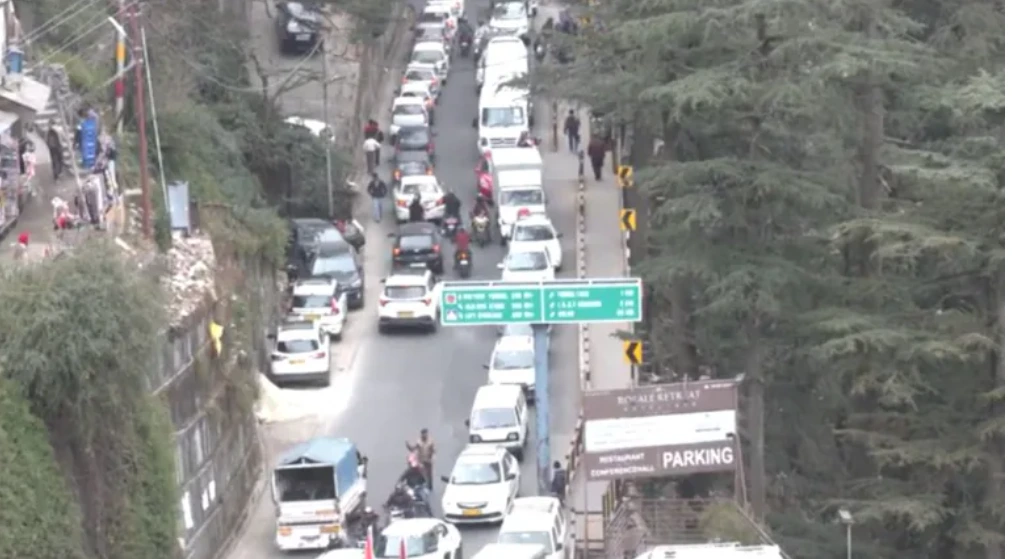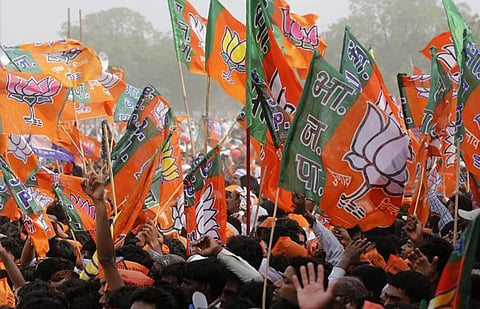[vc_row][vc_column][vc_column_text]The Supreme Court on Thursday observed that prima facie the adultery law was violative of the fundamental right to equality and also questioned the central government’s logic in defending adultery as a criminal offence.
A five-judge Constitution bench headed by Chief Justice of India Dipak Misra and also comprising Justices RF Nariman, AM Khanwilkar, DY Chandrachud and Indu Malhotra, examining the constitutional validity of Section 497 of the Indian Penal Code which deals with adultery, also disagreed with the Centre’s view that validity of Section 497 in the IPC should be upheld because it protects sanctity of marriages.
“The government’s rationale that it will protect sanctity of marriage doesn’t look sound. Sanctity of marriage is gone even when a married man has sexual intercourse with an unmarried woman but that’s not a crime. It is a crime only if a man has relations with a married woman and the husband of the woman complains,” observed Justice DY Chandrachud, a member of the five-judge bench.
The judge remarked that sanctity of marriage goes out of the window in such situations but the legislature has criminalised only one instance.
The bench further observed that each partner to a marriage is equally responsible to keep the sanctity of marriage intact.
“If a married woman has sexual intercourse with a married man other than her husband, why should the man alone be punished when woman too is equal partner to the crime? Such a distinction appears manifestly arbitrary,” it said.
Justice Chandrachud drew a parallel between the offence of bigamy under Section 494 in the IPC and Section 497. He noted that while bigamy is a gender-neutral offence and women can also be held liable.
“This distinction between Sections 494 and 497 itself can make Section 497 unconstitutional,” remarked Justice Chandrachud.
The court also deliberated upon doctrine of severability so as to strike down the discriminatory and arbitrary part of Section 497 while retaining the other portion.
Justice Chandrachud, however, said that he was not sure when such a route can be taken when issues of personal liberty are involved.
“We will have to examine if the entire Section 497 in the IPC should go,” he added.
During the hearing, Justice Indu Malhotra described as “absurd” the part of Section 497 which gives husbands the authority to forgive the other man and settle the case.
“It is absurd to treat a woman as a chattel. Adultery law reduces women into a chattel. There is no crime if a woman has an extramarital relationship with the consent or connivance of her husband. Are women the chattels of their husbands?” asked the bench, wondering how such a provision was drafted in the Indian Penal Code.
The SC also cited a situation where a woman has been staying away from her estranged husband for years. “If a woman then has a sexual intercourse with some other man, will it still lead to prosecution under Section 497 on a complaint by the estranged husband?” it asked.
Proceedings on Wednesday
On Wednesday, the top court asked why consensual sex between two adults should be a criminal offence. The Constitution bench, headed by Chief Justice Dipak Misra, said it would consider whether the law violates the Right to Equality. The bench indicated that instead of considering whether the law should be made gender-neutral, it would examine whether adultery should be a criminal offence at all.
“There were already civil liabilities and consequences of adultery. But making it an offence only for men is actually hit by Article 14 (right to equality)… Now the issue is why adultery should be a crime at all,” the bench headed by Chief Justice of India Dipak Misra observed. The bench also comprises Justices RF Nariman, AM Khanwilkar, DY Chandrachud and Indu Malhotra said.
Section 497 IPC says that whosoever has sexual intercourse with the wife of another man is guilty of adultery, which is punishable with imprisonment of either description for a term which may extend to five years, or with fine, or with both. It also says the woman involved can’t be punished.
This has been challenged by an NRI — Joseph Shine — who terms it “unjust, illegal and arbitrary and violative of citizens’ fundamental rights”. He questioned the gender bias in the provision drafted by Lord Macaulay in 1860. He challenged Section 198(2) the CrPC which allows a husband to bring charges against the man with whom his wife committed adultery.
The bench noted that the question was no more limited to making it a gender-neutral crime.
Appearing for the petitioner, senior advocate Kaleeswaram Raj said the simple question was whether a man can be sent to jail on the ground that he had consensual sex with the wife of another man.
At the outset, the Bench said it would refer the issue to a seven-judge Bench as there was already a verdict by a five-judge Bench upholding the validity of Section 497. But senior counsel Meenakshi Arora said the issue before the court in the earlier case was if women should also be punished. The legality of the provision was not challenged earlier, she submitted following which the court said it will decide the question.[/vc_column_text][vc_column_text css=”.vc_custom_1533212998726{padding-top: 10px !important;padding-right: 10px !important;padding-bottom: 10px !important;padding-left: 10px !important;background-color: #ffa500 !important;border-radius: 10px !important;}”]Background:
Section 497 IPC reads as: “497. Adultery.—Whoever has sexual intercourse with a person who is and whom he knows or has reason to believe to be the wife of another man, without the consent or connivance of that man, such sexual intercourse not amounting to the offence of rape, is guilty of the offence of adultery, and shall be punished with imprisonment of either description for a term which may extend to five years, or with fine, or with both. In such case the wife shall not be punishable as an abettor.”
Breaking it down what the provision says is: any man who has sexual intercourse with the wife of another man, without the consent of her husband, shall be held liable for the crime of adultery. In other words, a man having sexual intercourse with a married woman is guilty of adultery.
The law does not confer any right on women to prosecute the adulterous husband, or the woman with whom the husband has indulged in sexual intercourse with. In simple words, the husband solely has been permitted to prosecute the adulterer.
Only sexual intercourse with a married woman would amount to adultery. Sexual relations with a widow, sex worker or an unmarried woman would not attract this section. This has been confirmed by the Delhi High Court in the case of Brij Lal Bishnoi v/s State (1996).
The only sound explanation to such provision is that the perpetrator/offender has trespassed upon a husband’s marital property and is now liable to be prosecuted for unlawful possession.
Last year in December, the top court had issued notice to the Centre in a petition challenging the constitutionality of Section 497 IPC that had been filed by Shine.
The Ministry of Home Affairs in its affidavit had stated that “striking down Section 497 of IPC and Section 198(2) of CrPc will prove to be detrimental to the intrinsic Indian ethos which gives paramount importance to the institution and sanctity of marriage.”
The ministry referred to a judgment passed in 1985, Smt. Sowmithri Vishnu v. Union of India, where it cited that “It is better, from the point of view of the interests of the society, that at least a limited class of adulterous relationship is punishable by law. Stability of marriages is not an ideal to be scorned.”
A three-judge bench of the top Court headed by then Chief Justice YV Chandrachud had upheld the constitutionality of the provision in the case.
It was argued in that case that Section 497 is violative of Article 14 and 16 of the Constitution. The Supreme Court dismissed the contentions and stated that it is commonly accepted that “it is the man who is the seducer and not the woman,” completely ignoring the other aspect of the section.[/vc_column_text][/vc_column][/vc_row]


 India News15 hours ago
India News15 hours ago
 India News16 hours ago
India News16 hours ago
 India News13 hours ago
India News13 hours ago
 Entertainment12 hours ago
Entertainment12 hours ago
 Latest world news11 hours ago
Latest world news11 hours ago
 India News18 hours ago
India News18 hours ago
 India News18 hours ago
India News18 hours ago
 India News13 hours ago
India News13 hours ago










